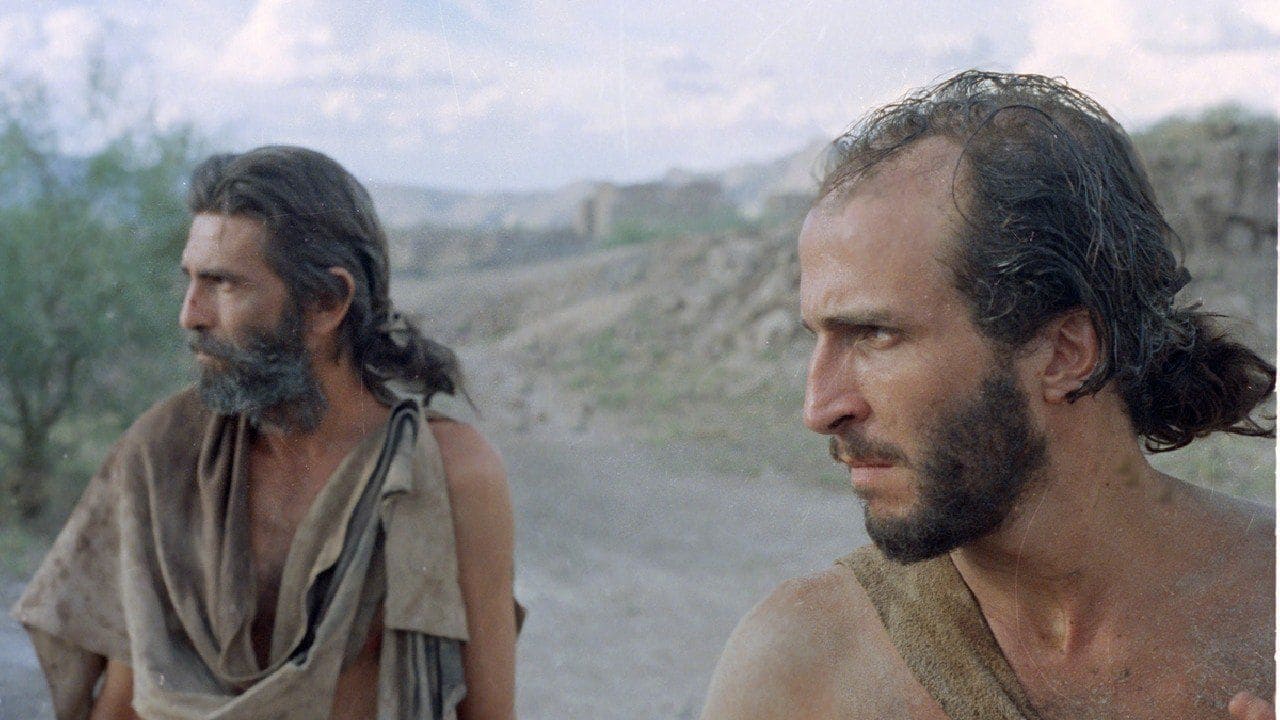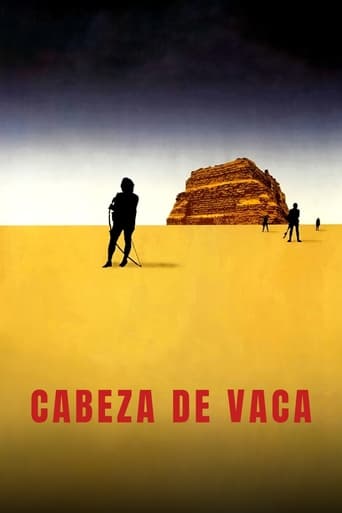

This dramatization of the true story of an odyssey that was as amazing in some respects as Homer's account of the voyage of Ulysses. The film puts the European invasion of the continent into more appropriate perspective, revealing the veil of lies about slavery and genocide that are common in histories of events in this place during this time. Although this film is politically compromised, it should be promoted to at least open the door on reality for those who don't know what this story is about.Unfortunately, the result of this compromise is that most products of U.S. public education and other provincial audiences, who generally don't know the story of Alvar Nuñez Cabeza de Vaca and what he had to say, will miss the significance his "report" to the Spanish monarchy but it may inspire those who do see the film to examine Nuñez' account of his journey in relation to the vast ignorance, greed and stupidity of the Spanish monarchy and the hierarchy of the Catholic church to whom he addressed his comments when he wrote what turns out to be the only accurate portrait of indigenous people of this continent, in which he showed the "conquered" victims of the invasion.Missed in this film is the greatest irony of ironies: that the church responded to Cabeza de Vaca's report to Isabella and Ferdinand & Co. by creditng the myth of the fountain of youth to reinterpret Cabeza de Vaca's statement about personal transformation and the humanity of the indigenous people. De Vaca's revelations exposed the hypocrisy of the Roman Catholic pretense that Christian idealism and not individual and collective greed motivated the conquest, the brutality, the slavery, the genocide. Ponce de Leon was sent out ostensibly to find the fountain of youth, while in the process, robbing, enslaving and killing indigenous people. Cabeza de Vaca died in poverty and is unknown to most students of the period.A movie uses visual and aural spectacle, music and narrative to hypnotize viewers to tell a story, which means evoking experience and emotions associated with events, places and people. With movies, language, custom, commerce, politics and the attention span of viewers limit possibilities. From the perspective of indigenous North American people, this film is too compromised but it's a step in the right direction, which explains comparisons to Dances With Wolves. After films are made, we may examine the ways films fail and we see why and this is valuable. In this film, the failure was not in execution but in the vision of the script. It conveys something important but does it leave out the part that makes it really relevant to our lives and contemporary practices that mirror the attitude of Isabella and the Vatican in the 16th century? Perhaps, it is better for a review to say nothing about this to avoid prejudicing viewers but the box office shows the opposite. It doesn't matter what we write in our reviews. You can't spoil a really good movie with a review.
... View MoreThis is a really interesting 1991 Mexican drama concerning the eight-year long journey (1528 - 1536) of Alvar Núñez Cabeza de Vaca, who was shipwrecked in Florida and enslaved by Indians, but who found a career as an itinerant Indian shaman, and eventually, after an endless journey through swamp and desert, ultimately found his way back to Spanish civilization. Cabeza de Vaca's few traveling companions, most notably the Moor Estebanico, helped fuel rumors of the Seven Cities of Cíbola, which led directly to the 1540 Coronado expedition and the first Spanish encounters with the Pueblo Indians of the Rio Grande Valley of New Mexico. Cabeza de Vaca's story is one the greatest personal survival tales in world history, and it made him one of the very, very few people who could fully appreciate the tragedy of Spain's conquest of the peoples of the Americas. The movie is in Spanish with English subtitles, but there is actually little Spanish at all, since Cabeza de Vaca is often alone or isolated, with no one to speak to. He is just as lost as the audience, in a world of Indian dialects.The director Nicolás Echevarría greatly simplified, even over-simplified, Cabeza de Vaca's journey. The movie suggests the shipwreck was in Florida, but that was actually the journey's first bloody stopping point. The final shipwreck occurred somewhere west of the Mississippi Delta, and Cabeza de Vaca's enslavement likely occurred somewhere near Galveston, Texas. Why leave that part out? Well, it's complicated, and ultimately for director Nicolás Echevarría may have been unimportant. Echevarría had something else in mind. The important part was that Cabeza de Vaca was thrown into a hallucinatory world of abasement and privation. Cabeza de Vaca carried a Christian cross, and his initial captors decided he should be sent to a shaman who also wore a cross, and be put to work tending the needs of a spoiled armless gnome. What a horrible existence! The hallucinatory quality is reminiscent of the magical realism pioneered by author Gabriel García Márquez and subsequently used by directors like Mel Gibson in "Apocalypto". Cabeza de Vaca's real existence may have been as a turtle-egg collector on the Texas beach, but instead the movie shows him apprenticing the shaman craft with his captors. Cabeza de Vaca's vision-laden emergence as a successful healer is the movie's best moment.The transition from swamp to desert is very abrupt, indicating that Echevarría wasn't much bothered by notions of continuity. Indeed, he had only two Mexican filming locations: the desert (in Coahuila) and the swamp (in Nayarit). As far as I could tell, the Indians were less like the real Indians of the northern Gulf of Mexico coast, and more like the Indians of Mexico. Then I remembered my history of Mexico ("Mexico" by Michael D. Coe, third edition, p. 146): "Into this uneasy political situation stepped the last barbaric tribe to arrive in the Valley of Mexico, the Aztecs, the 'people whose face nobody knows'. They said that they came from a place called 'Aztlan' in the west of Mexico, believed by some authorities to be the state of Nayarit, and had wandered about guided by the image of their tribal god, Huitzilopochtli ('Hummingbird-on-the left'), who was borne on the shoulders of four priests. .... We next see the Aztecs following a hand-to-mouth existence in the marshes of the great lake, or 'Lake of the Moon'. On they wandered, loved by none, until they reached some swampy, unoccupied islands, covered by rushes, near the western shore; it was claimed that there the tribal prophecy, to build a city where an eagle was sitting on a cactus, holding a snake in its mouth, was fulfilled.The director suggests discreetly, by his choice of filming location in the Nayarit swamps, through simplification and also perhaps by conflation of the Texas Indians with Aztecs, and by using a dash of magical realism, that Cabeza de Vaca's real story is about the tragedy of Mexico's conquest by Spain. And Cabeza de Vaca's story is about that, partly at any rate. The film is a meditation about Mexico's tortured birth as a Spanish colony. A powerful film and well-worth watching!
... View MoreAmazingly weird (or weirdly amazing?) movie of an odyssey of Spanish conquistadores through Central America 1582. Beautiful images, unseen collection of freaks and outcasts, strong and sometimes disturbing episodes. The plot has a few flaws, but this is a visual movie:Werner Herzog meets Fellini in the Mexican jungle, definitely worth seeing.
... View MoreI was still up at 12 in the morning, and just happened to come across this movie in the storage room. I was expecting this film to make me fall asleep, but the exact opposite occurred! This film reminds me of Tolstoy's Resurrection. It's about a man who finally realizes that the Indians were not savages and did not need to be Christianized. It's about a man, who finally sees the light.Although there is nudity in the film, it makes the picture more realistic, as back then, the idea of clothes for the Indians were different than those of the Spanish. The image that affected me the most was the huge, gleaming silver cross, carried by hundreds of spanish soldados across Old World land. There are many interpretations of what this may mean, but for sure, it definitely represents the loss of innocence for the Indians and the final victory for the Spanish. Go and see this film! It is absolutely fantastic!
... View More